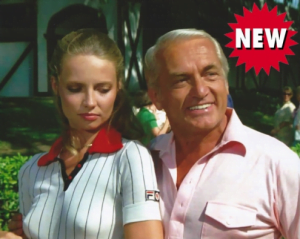When I design a golf fitness program, it is based on a set of criteria. The criteria has been developed and tweaked over a span of three decades.
Originally, I began in the 1980’s using the information at hand… which was minimal at best. I would read bodybuilding, football, tennis, and other fitness guides. You see, golf wasn’t thought to be an ‘athletic’ sport… and let’s be honest, the golfers of the 80’s for the most part looked like incredible slouches.
Compare their physiques with the golfers of today… Adam Scott, DJ,Tiger, even Phil has shaped up along with Ricky Fowler and Lee Westwood. Being in golf shape isn’t a luxury it’s a necessity if you want to stay on the tour.
Gary Player was one of the first to totally understand it. Being small in stature, he needed to be strong, flexible and powerful in order to compete. That extra pop to his game made him a legend… and I think he looks pretty damn good these days!
Most of my experiments back then revolved around the information at hand… and by today’s standards aren’t as effective. However, I still trained the full body on certain days.
In the 1960’s even Jack Nicklaus noticed that losing some fat may help his game… he lost a lot of weight and really made an effort to get thinner. We all know how that turned out… but still, fitness never really caught on.
As time marched on, I became interested in exercise techniques outside of the bodybuilding realm. Jiu-Jitsu and MMA workouts in particular intrigued me. While more focused on lifting, slamming, and punching, MMA workouts also use ROTATION… an important aspect for golf… and one that my bodybuilding routines didn’t build in.
And by the late 90’s the guy that really put fitness on the map was Tiger Woods… and he did it with a thunderous roar. Fitness became his secret ingredient in the early days and he rode that to a ton of victories.. so early 2000’s the guys on tour began to take notice and the science has evolved since.
After reviewing his workouts though, I think he could do better… of course, I’m just looking at what is posted on his website. I have no idea if his current programs use more modernized techniques.
One thing’s for sure, Tiger looks to be in phenomenal shape and his club-head speed is right where it should be… and pretty damn good for someone in their late 30’s.
To me, the golf swing is a full body movement. Therefore, the entire body must be strong… with flexibility playing a very important role.
As golfers, we put a lot of wear and tear on our bodies. That is why my programs have a deep rooting in flexibility and range of motion. And while it’s not popular, I’m a firm believer in foam rolling.
When I was younger, I didn’t give much thought to flexibility and foam rolling… mainly because I’m naturally flexible and I didn’t experience much pain. However, as the years added up, I woke up with more pains.. sore muscles, and noticed a decline in flexibility. To this, I put an extensive amount of research into learning about flexibility, maintaining it, and eliminating muscle discomfort… enter foam rolling.
In fact, Rich, our Director of Instruction here at Golf Aggressive was recently suffering from pain in his hip. After he described it to me, I told him how to fix it with foam rolling… now Rich is stubborn and did what anyone should do first… go to the Doctor.
After visiting his doctor, he was told to stop playing golf a few weeks and was given pain pills. UGH. Maybe that’s why America has one of the highest problems with prescription drugs?
This Doctor is from the pill pop generations and should have told Rich to see a physical therapist… those guys get IT!
To make a long story short, Rich began foam rolling. Yes, it was painful at first. Rich stuck with it though and is now PAIN FREE.
Rich also was able to keep playing through the injury and the pain subsided each day as he foam rolled. In addition, Rich participated in our Flatbelly Golf Challenge and lost almost 30 pounds! That sure helped too..
My point is, we have to look at the entire body. Strength, flexibility, balance, and preventative maintenance (foam rolling) are all designed into my programs. Are they easy? Hell no… but they shouldn’t be either.
My programs are based on progression. Moving from the easy exercises as you begin the programs to more difficult ones as you gain experience and skill.
In a nutshell, here are my thoughts that are behind each Golf Fitness Workout program I design.
Core Principle #1 – Efficient
Workouts must be efficient and resources optimized based on four design elements.
* Time – Workouts should require as little time as possible to achieve the desired result.
* Equipment – Should be minimal, affordable, and highly versatile.
* Energy – Training takes all aspects of human energy into account: physical, mental, and skills.
* Space – If stuck in a 10 x 10 box, the workouts would still be expected to deliver a highly functional golf fitness workout (or at home golf skill training). All methods must use a minimal amount of space and still be effective.
Core Principle #2 – Functionality
Training is primarily focused on full body movements with very little concern for isolation. The golf body works as a whole during a golf swing and you will rarely isolate.
Core Principle #3 – Balance
Training promotes progression through a balance of agility objectives. This means that if you want to be stronger, you also need to be more conditioned, agile, and focused. You can’t achieve lasting results in any one ability by sacrificing gains in others.
Core Principle #4 – Innovative
Golf fitness requires innovation; the ability to imagine solutions for yet-to-arrive problems. With golf fitness, you will be able to innovate movements, workouts, and programs to meet the unique demands of each golfer.
Core Principle #5 – Longevity
It’s not about you did in the past, it’s about what you can do right now. Training should be based on a lifetime of progression, therefore, maximizing a particular exercise has no purpose unless you plan to maintain that capability over a 20 – 50 year span.
Core Principle #6 – Progression
To improve our game, our programs will require progression. Anyone who stays a white belt in Karate obviously isn’t getting any more dangerous. The same principle applies to our golf fitness training; if you are not building your skill, you are not going to get fitter or better. All programs must be designed with a clear path of progression.
And there you have it, my thoughts on the golf swing and how to create workouts that will deliver big results in the shortest amount of time possible.


